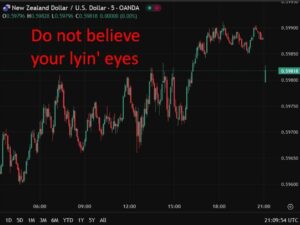Forex Economic Calendar Overview: Key Events for the Next Trading Week (22.09.2025–28.09.2025)

Last week, four major central banks, including the US Fed, held policy meetings. While most of the outcomes were largely anticipated, investors are still grappling with uncertainty over the future actions of these central banks.
In the upcoming week of September 22–28, 2025, market participants will focus on the publication of crucial macroeconomic statistics from Germany, the Eurozone, the UK, the US, Australia, and Japan, as well as the outcomes of Chinese and Swiss central bank meetings.
Investors will pay special attention to Friday’s publication of the US PCE indexes and the Fed’s preferred inflation indicators.
Note: During the coming week, new events may be added to the calendar, and/or some scheduled events may be canceled. GMT time
The article covers the following subjects:
Major Takeaways
- Monday: People’s Bank of China interest rate decision.
- Tuesday: Preliminary PMIs from Germany, the Eurozone, the UK, and the US.
- Wednesday: Australian CPI.
- Thursday: Swiss National Bank interest rate decision, US annual GDP for Q2 (final estimate), Japanese CPIs.
- Friday: US PCE indexes.
- Key event of the week: US PCE indexes.
Monday, September 22
01:15 – CNY: People’s Bank of China Interest Rate Decision
Since May 2012, the People’s Bank of China has been lowering its interest rate to support Chinese manufacturers. Last time, the bank reduced the rate in October 2024 after a long pause since August 2023 and a brief halt in July, bringing the rate down by 0.1% to its current level of 3.00%.
In 2024, the world’s major central banks have also started a policy easing cycle amid slowing inflation. What will the Chinese central bank do this time after pausing since September 2023 and easing policy in July 2024?
The People’s Bank of China will likely keep the interest rate unchanged at 3.00% at this meeting, although other decisions are also possible.
Should the People’s Bank of China make statements that deviate from expectations, volatility may increase across the entire financial market, particularly in the Asian one. Investors will closely watch the bank’s assessment of the Chinese economy’s prospects and its policy stance in the short term.
18:00 – GBP: Bank of England Governor’s Speech
Andrew Bailey is expected to speak about the results of last week’s Bank of England meeting and comment on the decision regarding interest rates. Typically, during the speech of the Bank of England governor, the British pound and the FTSE index of the London Stock Exchange face a significant spike in volatility, especially if there are any indications regarding monetary policy tightening or easing. Andrew Bailey will likely explain the Bank of England’s interest rate decision and discuss the UK economy’s health and prospects against the backdrop of high energy prices and inflation.
Tuesday, September 23
07:30 – EUR: Manufacturing and Services Purchasing Managers’ Index of the German Economy by S&P Global. Composite Purchasing Managers’ Index of the German Economy by S&P Global (Preliminary Release)
The manufacturing and services PMIs are important indicators of the business environment and the health of the German economy. These sectors play a significant role in Germany’s GDP. A reading above 50 indicates a positive outlook and bolsters the euro, while a reading below 50 is negative for the euro. Conversely, data worse than the forecasted and/or the previous value will prove to be negative for the euro.
Previous values:
- Manufacturing PMI: 49.8, 49.1, 49.0, 48.3, 48.4, 48.3, 46.5, 45.0, 42.5 in December 2024, 43.0, 43.0, 40.6, 42.4, 43.2, 43.5, 45.4, 42.5, 41.9, 42.5, 45.5, 43.3, 40.8, 39.6, 38.8, 40.6, 43.2, 44.5, 44.7, 46.3, 47.3, 47.1, 46.2, 45.1, 47.8, 49.1, 49.3, 52.0, 54.8, 54.6;
- Services PMI: 49.3, 50,6, 49.7, 47.1, 49.0, 50.9, 51.1, 52.5, 51.2 in December 2024, 49.3, 51.6, 50.6, 51.2, 52.5, 53.1, 54.2, 53.2, 50.1, 48.3, 47.7, 45.7, 48.2, 50.3, 52.3, 54.1, 57.2, 56.0, 53.7, 50.9, 50.7, 49.2, 46.1, 46.5, 45.0, 47.7, 49.7, 52.4, 55.0, 57.6, 56.1, 55.8;
- Composite PMI: 50.5, 50.6, 50.4, 48.5, 50.1, 51.3, 50.4, 50.5, 48.0 in December 2024, 47.2, 48.6, 47.5, 48.4, 49.1, 50.4, 52.4, 50.6, 47.7, 46.3, 47.0, 47.4, 45.9, 46.4, 48.5, 50.6, 53.9, 54.2, 52.6, 50.7, 49.9, 49.0, 46.3, 45.1, 45.7, 46.9, 48.1, 51.3, 53.7, 54.3, 55.1, 55.6.
08:00 – EUR: Manufacturing and Services Purchasing Managers’ Index. Composite Purchasing Managers’ Index of Eurozone Manufacturing Activity by S&P Global (Preliminary Release)
The Eurozone manufacturing and services PMIs are significant indicators of the European economy. Readings above 50 are positive and strengthen the euro, while readings below 50 are negative for the currency. If the figures are worse than the forecasted and/or the previous value, the euro will be affected negatively.
Previous values:
- Manufacturing PMI: 50.7, 49.8, 49.5, 49.4, 49.0, 48.6, 47.6, 46.6, 49.6 in December 2024, 45.2, 46.0, 45.0, 45.8, 45.8, 45.8, 47.3, 45.7, 46.1, 46.5, 46.6, 44.4, 43.1, 47.2, 42.7, 43.4, 44.8, 45.8, 47.3, 48.5, 48.8 in January 2023;
- Services PMI: 50.5, 51.0, 50.5, 49.7, 50.1, 51.0, 50.6, 51.3, 51.2 in December 2024, 49.5, 51.6, 51.4, 52.9, 51.9, 52.8, 53.2, 53.3, 51.5, 50.2, 48.4, 48.8, 47.8, 48.7, 50.9, 52.0, 55.1, 56.2, 55.0, 52.7, 50.8 in January 2023;
- Composite PMI: 51.0, 50.9, 50.6, 50,2, 50.1, 50.9, 50.2, 50.2, 48.0 in December 2024, 48.3, 50.0, 49.6, 51.0, 50.2, 50.9, 52.2, 51.7, 50.3, 49.2, 47.9, 47.6, 46.5, 47.2, 48.6, 52.8, 54.1, 53.7, 52.0, 50.3, 49.3 in January 2023.
08:30 – GBP: Manufacturing and Services Purchasing Managers’ Index. Composite Purchasing Managers’ Index of the UK Manufacturing Sector by S&P Global (Preliminary Release)
The manufacturing and services PMIs serve as a vital indicator of the UK economy’s health. The services sector employs the majority of the UK’s working-age population and contributes approximately 75% of GDP. Financial services continue to be the most important part of the services sector. If the data is worse than the forecast and the previous value, the British pound will likely experience a short-term but sharp decline. If the data exceeds the forecast and the previous value, it will have a positive impact on the currency. At the same time, a PMI reading above 50 is favorable and strengthens the British pound, while a reading below 50 is negative for the currency.
Previous values:
- Manufacturing PMI: 47.0, 48.0, 47.7, 46.4, 45.4, 44.9, 46.9, 48.3, 48.0, 49.9, 51,5, 52.5, 52.1, 50.9, 51.2, 49.1, 50.3, 47.5, 47.0, 46.2, 44.8, 44.3, 45.3, 46.5, 47.1, 47.8, 47.9, 49.3, 47.0, 45.3, 46.5, 46.2, 48.4;
- Services PMI: 54.2, 51.8, 52.8, 50.9, 49.0, 52.5, 51.0, 50.9, 51.1 in December 2024, 50.8, 52.0, 51.4, 53.7, 52.5, 52.1, 52.9, 55.0, 53.1, 53.8, 54.3, 53.4, 49.5, 49.3, 51.5, 53.7, 55.2, 55.9, 52.9, 53.5, 48.7, 49.9, 48.8, 48.8, 50.0, 50.9, 52.6;
- Composite PMI: 53.5, 51.5, 52.0, 50.3, 48.5, 51.5, 50.5, 50.6, 50.4 in December 2024, 50.5, 51.8, 49.6, 53.8, 52.8, 52.3, 53.0, 54.1, 52.8, 53.0, 52.9, 52.1, 48.7, 48.5, 50.8, 52.8, 54.0, 54.9, 52.2, 53.1, 48.5 in January 2023.
13:45 – USD: Manufacturing and Services Purchasing Managers’ Index of the US Economy by S&P Global. Composite Purchasing Managers’ Index (Preliminary Releases)
The PMIs of the most important US economic sectors, released by S&P Global, are an important gauge of the US economic conditions. A PMI reading above 50 signals bullishness, bolstering the US dollar, whereas a reading below 50 bodes negatively for the greenback.
Previous values:
- Manufacturing PMI: 53.0, 49.8, 52.0, 52.0, 50.2, 50.2, 52.7, 51.2, 49.4 in December 2024, 49.7, 48.5, 47.6, 47.9, 49.6, 51.6, 51.3, 50.0, 51.9, 52.2, 50.7, 47.9, 50.0, 49.8, 49.0, 46.3, 48.4, 50.2, 47.3, 46.9, 46.2, 47.7, 50.4, 52.0, 51.5;
- Services PMI: 54.5, 55.7, 52.9, 53.7, 50.8, 54.4, 51.0, 52.9, 56.8 in December 2024, 56.1, 55.0, 55.2, 55.7, 55.0, 55.3, 54.8, 51.3, 51.7, 52.3, 52.5, 51.4, 50.6, 50.1, 52.3, 54.4, 54.9, 53.6, 50.6, 46.8, 44.7, 46.2, 47.8, 49.3, 43.7, 47.3, 52.7, 53.4, 55.6;
- Composite PMI: 54.6, 55.1, 52.9, 50.3, 50.6, 53.5, 51.6, 52.7, 55.4 in December 2024, 54.9, 54.1, 54.0, 54.6, 54.3, 54.8, 54.5, 51.3, 52.1, 52.5, 52.0, 50.9, 50.7, 50.2, 52.0, 53.2, 54.3, 53.4, 52.3, 50.1, 46.8 in January 2023.
18:30 – CAD: Bank of Canada Governor Tiff Macklem’s Speech
The Canadian economy, like the global economy, is slowing down, and the situation is rapidly shifting for the worse. It will be interesting to hear Macklem’s perspective on Canada’s economic outlook and the central bank’s monetary policy amid falling inflation.
If Tiff Macklem mentions the Bank of Canada’s monetary policy, the volatility in the Canadian dollar will grow sharply. A signal of monetary policy tightening will bolster the Canadian dollar. Conversely, an intent to ease monetary policy will have a negative impact on the currency.
Additionally, Tiff Macklem will likely clarify the Bank of Canada’s recent interest rate decision and provide guidance for investors ahead of the central bank’s upcoming meeting.
Wednesday, September 24
01:30 – AUD: Australian Consumer Price Index
The Consumer Price Inflation Index, published by the Reserve Bank of Australia and the Australian Bureau of Statistics, gauges retail prices of goods and services in Australia. The CPI is the most significant indicator of inflation and changes in consumer preferences. A high indicator reading is positive for the Australian dollar, while a low reading is negative.
Previous monthly values: +2.8% in July, +1.9% in June, +2.1% in May, +2.4% in April, March, and February, +2.5% in January 2025, +2.5% in December 2024, +2.3% in November, +2.1% in October and September, +2.7% in August 2024.
The Australian central bank’s CPI inflation target ranges between 2% and 3%. According to the minutes of a recent RBA Board meeting, the central bank does not rule out back-to-back rate cuts, with forecasts still pointing to a couple of reductions ahead.
Australian inflation seems to decelerate, moving towards the target range of 2%–3%. The expected positive CPI reading will likely strengthen the Australian dollar. If the indicator readings are worse than the forecast or the previous value, the Australian dollar will face short-term negative effects.
Thursday, September 25
07:30 – CHF: Swiss National Bank’s Interest Rate Decision. SNB Monetary Policy Statement
Before the June 2022 SNB meeting, the deposit rate was negative and stood at -0.75%. However, this central bank meeting resulted in the rate being raised to -0.25%.
In the accompanying statement, SNB chairman Thomas Jordan noted that the Swiss franc is no longer overvalued. He also mentioned that the implementation of a tighter monetary policy is intended to prevent an increase in inflation in Switzerland.
Recently, the Swiss franc has once again gained popularity as a safe-haven asset. However, the possibility of intervention is currently preventing the currency from experiencing significant growth. SNB executives emphasize that intervening in the foreign exchange market is crucial for maintaining the low investment appeal of the franc and alleviating upward pressure on the currency.
The deposit rate is widely anticipated to remain at 0.00% at the end of the September 2025 meeting, following a series of 0.25% reductions at each of the last six meetings since March 2024.
Besides, traders will scrutinize the SNB statement for signals regarding the further monetary policy plans. The hawkish tone of the statement will favor the Swiss franc. Conversely, the soft tone and inclination to resume the loose monetary policy will negatively affect the currency. If the SNB board makes unexpected statements, volatility in the currency market and the Swiss franc is expected to increase.
08:00 – CHF: Swiss National Bank Press Conference
The SNB press conference will commence after the release of the interest rate decision. During the press conference and the speech of SNB chairman Martin Schlegel, who succeeded Thomas Jordan at the end of September 2024, volatility in the Swiss franc will surge. Traders expect signals regarding further plans for the SNB’s monetary policy. The hawkish tone of Martin Schlegel’s speech will bolster the Swiss franc, while a softer tone and the SNB’s inclination towards a soft monetary policy will negatively affect the franc. Volatility in the currency market and in the value of the Swiss franc is expected to rise.
12:30 – USD: US GDP Annual Growth Rate for Q2 (Final Estimate). Core Personal Consumption Expenditures (PCE)
The GDP data is one of the key indicators, along with labor market and inflation data, for the US Fed in terms of its monetary policy. A positive indicator reading strengthens the US dollar, while a weak GDP report is harmful for the currency. In Q1 2025, GDP declined by -0.5%, after gaining +2.4% in Q4 2024, +3.1% in Q3, +3.0% in Q2, +1.6% in Q1 2024, +3.2% in Q4 2023, +4.4%, +2.4% in Q2, +2.8% in Q1 2023.
If the data indicate a decline in GDP in Q2 2025, the US dollar will face significant pressure. Conversely, positive GDP figures will bolster the greenback and US stock indices.
The preliminary and second estimates stood at +3.0% and +3.3%, respectively.
Personal Consumption Expenditures (PCE) data reflect the average amount of money consumers spend per month on durable goods, consumer goods, and services. The core PCE price index excludes food and energy prices. The annual core PCE is the main inflation gauge used by the US Fed as the primary inflation indicator. Quarterly data is published within a broader GDP report. This data serves as an indirect gauge of consumer spending, the main driver of the US economy.
The inflation rate, along with the labor market and GDP data, is crucial for the Fed in determining its monetary policy. Growing prices exert pressure on the central bank to tighten its policy and raise interest rates.
The PCE data above the forecasted and/or previous values may boost the US dollar, while a decline in the reading will likely exert a negative impact on the greenback.
Previous quarterly values: +3.5%, +2.6% in Q4 2024.
The preliminary estimate stood at +2.5%.
23:30 – JPY: Tokyo Consumer Price Index (CPI). Tokyo Core CPI excluding Food and Energy
Tokyo’s consumer price indexes, published by the Statistics Bureau of Japan, gauge the price change of a selected basket of goods and services over a given period. These indexes are key indicators for assessing inflation and consumer preferences.
Previous values YoY:
- Tokyo CPI: +2.6%, +2.9%, +3.1%, +3.4%, +3.5%, +2.9%, +2.9%, +3.4%,+3.1%, +2.6%, +1.8%, +2.1%, +2.6%, 2.2%, +2.3%, +2.2%, +1.8%, +2.6%, +2.5%, +1.8%, +2.4%, +2.6%, +3.3%, +2.8%, +2.9%, +3.2%, +3.2%, +3.2%, +3.5%, +3.3%, + 3.4%, +4.4% in January 2023;
- Tokyo CPI excluding food and energy: +3.0%, +3.1%, +3.1%, +2.1%, +2.0%, +1.1%, +2.2%, +2.5%, +2.4%, +2.2%, +1.8%, +1.6%, +1.6%, +1.5%, +1.8%, +2.2%, +1.8%, +2.9%, +3.1%, +3.3%, +3.5%, +3.6%, +3.8%, +4.0%, +4.0%, +4.0%, +3.8%, +3.9%, +3.8%, +3.4%, +3.1%, +3.0% in January 2023.
The indicator reading lower than forecasted and/or previous values may weaken the yen, while a rise in the indicator may strengthen the currency.
Friday, September 26
12:30 – USD: Core Personal Consumption Expenditures (PCE)
Personal Consumption Expenditures (PCE) data reflect the average amount of money consumers spend per month on durable goods, consumer goods, and services. The core PCE price index excludes food and energy prices. The annual core PCE is the main inflation gauge used by the US Fed as the primary inflation indicator.
The inflation rate, along with the labor market and GDP data, is crucial for the Fed in determining its monetary policy. Growing prices exert pressure on the central bank to tighten its policy and raise interest rates.
The PCE data above the forecasted and/or previous values may boost the US dollar, while a decline in the reading will likely exert a negative impact on the greenback.
Previous values YOY: +2.9%, +2.8%, +2.7%, +2.5%, +2.6%, +2.8%, +2.6% in January 2025, +2.8% in December 2024, +2.8% +2.8%, +2.7%, +2.7%, +2.7%, +2.6%, +2.7%, +2.9%, +3.0%, +2.9%, +3.1% in January 2024, +2.9%, +3.2%, +3.5%, +3.7%, +3.8%, +4.3%, +4.3% +4.7%, +4.8%, +4.8%, +4.7%, +4.7%, +4.6%, +4.8%, +5.1%, +5.2%, +4.9%, +4.7%, +4.8%, +4.7%, +4.9%, +5.2%, +5.3%, +5.2% in January 2022.
Price chart of USDX in real time mode
The content of this article reflects the author’s opinion and does not necessarily reflect the official position of LiteFinance broker. The material published on this page is provided for informational purposes only and should not be considered as the provision of investment advice for the purposes of Directive 2014/65/EU.
According to copyright law, this article is considered intellectual property, which includes a prohibition on copying and distributing it without consent.







